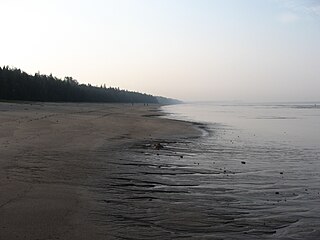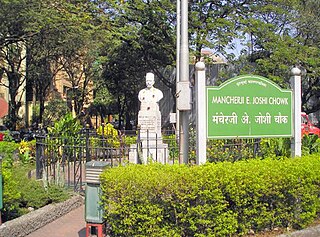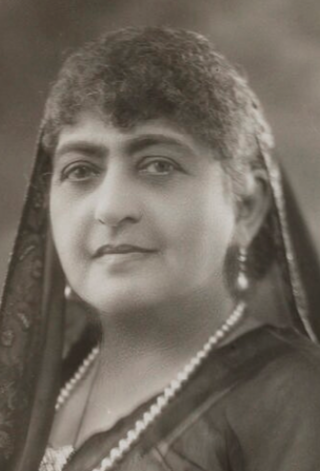
The Parsis or Parsees are an ethnoreligious group of the Indian subcontinent adhering to Zoroastrianism. They are descended from Persians who migrated to Medieval India during and after the Arab conquest of the Persian Empire to escape religious persecution. Parsis are the older of the Indian subcontinent's two Zoroastrian communities, the other being the Iranis, whose ancestors migrated to British-ruled India from Qajar-era Iran.

A dakhma, also known as a Tower of Silence, is a circular, raised structure built by Zoroastrians for excarnation, in order to avoid contamination of the soil and other natural elements by the decomposing dead bodies. Carrion birds, usually vultures and other scavengers, consume the flesh. Skeletal remains are gathered into a central pit where further weathering and continued breakdown occurs.

The history of Mumbai can be traced back to 600 BC, with evidence of the first known settlement of the Harrappan civilization discovered in the region.

Claude Batley F.R.I.B.A., F.I.A.A., was an English architect who as practitioner, teacher and President of the Indian Institute of Architects from 1921 to 1923, played an influential role in development of modern architecture in India in the first half of the 20th century.
The Wadia family is a Parsi family from Surat, India currently based in Mumbai, India. The family rose to wealth in the mid-1700s as shipbuilders serving the British East India Company as the latter established its sway over India. During the declining years of the British Raj, Neville Wadia, scion of the main branch of the family, married Dina Jinnah, only child of Muhammad Ali Jinnah, the founder of Pakistan. Despite being the only descendants of the founding father of Pakistan, the family chose to stick to their mills and factories in India rather than emigrate to the new country. They prospered abundantly under Nehru-Gandhi dispensation and today, they run the Wadia Group of companies, one of the larger industrial conglomerates in India.
Neville Ness Wadia was an Indian businessman, philanthropist and a member of the Wadia family, an old Parsi family which, by the 1840s, was one of the leading forces in the Indian shipbuilding industry. Wadia was the last of India's aristocratic taipans, who expanded his family textile concern into one of India's largest and donated lavishly for the welfare of the Parsee community to which he belonged.
Udvada is a town situated in Pardi taluka in the Valsad district in the state of Gujarat, India. Udvada is a coastal town located around 24 km from the Valsad city. The Zoroastrian temple, Udvada Atash Behram is situated here.
Colaba Causeway, officially known as Shahid Bhagat Singh Road, is a commercial street, and a major causeway or land link between Colaba and the Old Woman's Island in the city of Mumbai, India.

Nargol is a village located in the Indian state of Gujarat.

Dadar Parsi Colony is an upper class Parsi colony in midtown South Mumbai. It is situated in the locality of Dadar-Matunga. Unlike the other Parsi colonies it is not surrounded by a wall or fence and is not isolated from its surroundings. The colony houses the famous Five Gardens created by Mancherji Joshi, a renowned Parsi.

The Leopold Cafe and Bar is a restaurant and bar on Colaba Causeway, in Colaba area of Mumbai, India, located across from the Colaba Police station. It was one of the first sites attacked in the 2008 Mumbai attacks.

Jamshedji Sorab Kukadaru was a Zoroastrian priest in Mumbai, India. He was revered by Zoroastrians for a number of miracles he is believed to have performed. He was well known by his contemporaries for his simple lifestyle and asceticism, as well as his unflinching adherence to priestly purity rules. Most of his life is said to have been spent in prayer.

Jamshedji Nusserwanji Tata was a pioneering Indian industrialist who founded the Tata Group, India's biggest conglomerate company. Named the greatest philanthropist of the century by several polls and ranking lists, he established the city of Jamshedpur. He is regarded as the Father of Indian Industry.

Grant Road is a locality in South Mumbai.
The role of women in the Zoroastrian and Parsi communities remains controversial and significant. Gender roles in the community have slowly been evolving as societal norms around them progress.
B.D. Petit Parsee General Hospital is a hospital in Cumballa Hill, Mumbai.

Maneckji Seth Agiary is the second-oldest Zoroastrian fire temple in Mumbai, India, constructed in 1735. Banaji Limji Agiary, established in 1709, is the oldest. As in all Zoroastrian temples, non-Parsis are not allowed to enter. The architecture of the building is a mix of Persian and Greek Revival styles, with two lamassus standing guard at the temple entrance.

Dhunbai Cowasji Jehangir was an Indian philanthropist and leader of women's organizations, based in Bombay.












